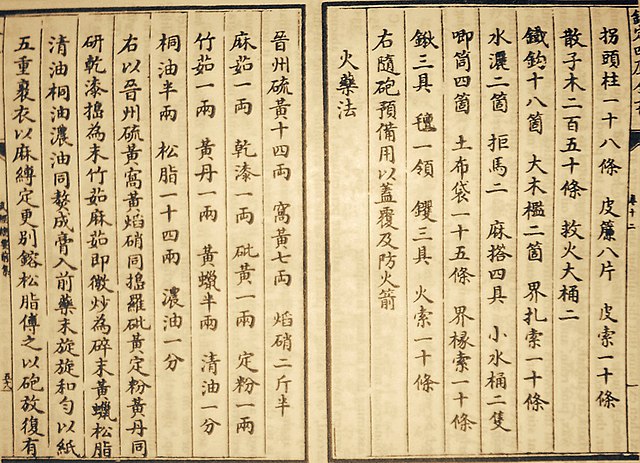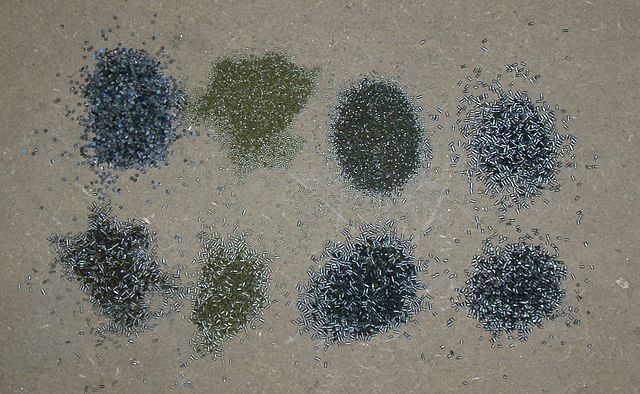Gunpowder, also commonly known as black powder to distinguish it from modern smokeless powder, is the earliest known chemical explosive. It consists of a mixture of sulfur, carbon, and potassium nitrate (saltpeter). The sulfur and carbon act as fuels while the saltpeter is an oxidizer. Gunpowder has been widely used as a propellant in firearms, artillery, rocketry, and pyrotechnics, including use as a blasting agent for explosives in quarrying, mining, building pipelines, tunnels, and roads.
Gunpowder for muzzleloading firearms in granulation size
American Civil War re-enactors volley firing with black powder
Flash pan starter dispenser
Earliest known written formula for gunpowder, from the Wujing Zongyao of 1044 AD.
Smokeless powder is a type of propellant used in firearms and artillery that produces less smoke and less fouling when fired compared to black powder. Because of their similar use, both the original black powder formulation and the smokeless propellant which replaced it are commonly described as gunpowder. The combustion products of smokeless powder are mainly gaseous, compared to around 55% solid products for black powder. In addition, smokeless powder does not leave the thick, heavy fouling of hygroscopic material associated with black powder that causes rusting of the barrel.
Finnish smokeless powder
An extruded stick powder
Close-up of Cordite filaments in a .303 British rifle cartridge (manufactured in 1964)
Ammunition handloading powders








